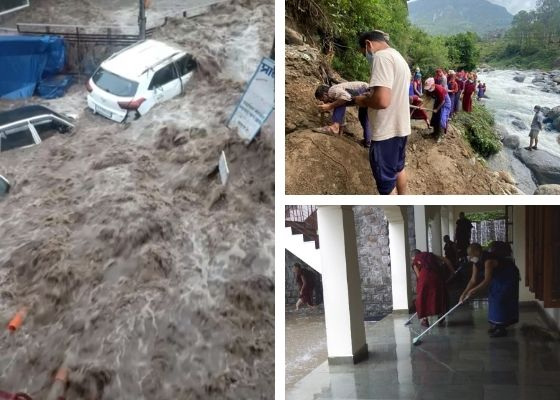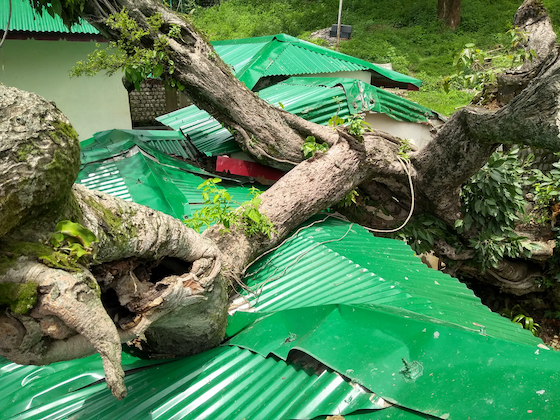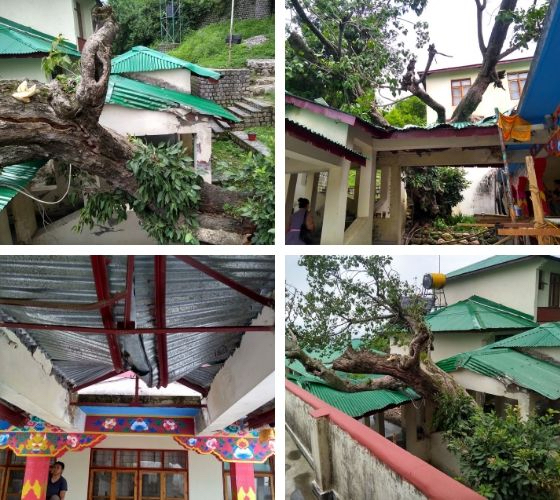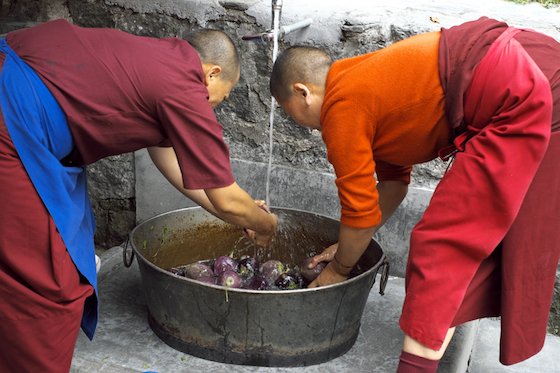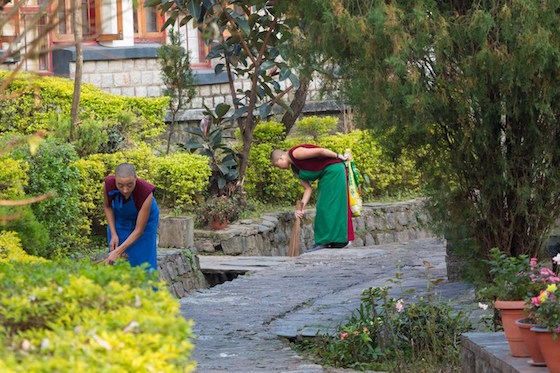Nuns Celebrate Completed Kitchen Repairs
Last year, we asked for your help to renovate the kitchen at Dolma Ling Nunnery and Institute, home to about 300 nuns. The old kitchen space was plagued with poor ventilation, intense heat, and leaks, especially in the monsoon, so working in the kitchen was almost unbearable for the nuns during the spring and summer. Thank you for supporting this project and making it safer and healthier for the nuns on kitchen duty!
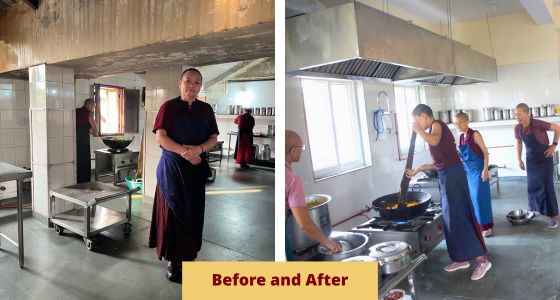
The Dolma Ling kitchen is safer and more comfortable for the nuns on kitchen duty. The renovations included changing the roof line to stop leaks, raising the walls, improving ventilation, and putting in larger, low-maintenance windows.
The nuns are all extremely happy with the increased space, light, and ventilation of the renovated kitchen. It feels very fresh and clean. The nuns spent hours scrubbing and cleaning all the equipment as they moved it from their temporary kitchen in the dining hall, where they had been cooking over the winter.
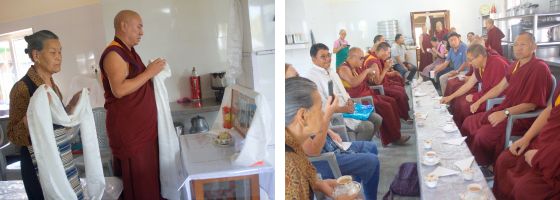
On April 7th, 2025, the nuns celebrated their first day in the renovated kitchen with a small impromptu ceremony at morning tea time. They invited the teachers and staff.
Space, Light, and Ventilation: A Recipe for a Healthier Kitchen
The kitchen at Dolma Ling is the most heavily used part of the nunnery complex and the nuns on kitchen duty cook for 277 nuns and 20 staff daily. However, the lack of adequate ventilation and the leaking roof made working in the kitchen very uncomfortable and dangerous.
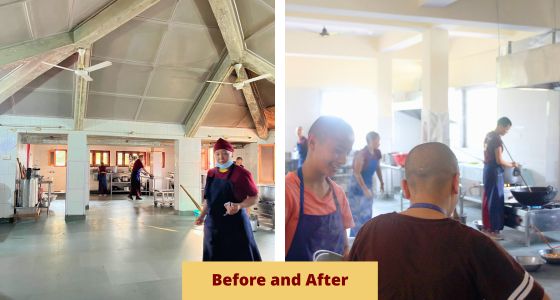
Part of the renovations included removing the old sloped slate roof which leaked and replacing it with a flat concrete roof.
All the cooking takes place in huge pots on gas burners and the kitchen used to become extremely hot. Last June, the outside temperature in Dharamsala reached 105°F or 41°C. Inside the Dolma Ling kitchens, it was even hotter! Northern India experiences heatwaves between April and June, but in recent years, climate change and global warming have caused extreme temperatures to arrive earlier and last longer. Already in early April 2025, there have been extreme heat warnings for parts of northern India so it is a great relief that the kitchen repairs are completed.
There was an old extractor fan, but it didn’t provide sufficient ventilation. Moreover, the noise and smell from the exhaust fan in the kitchen wall disturbed the teachers living adjacent to the kitchen.
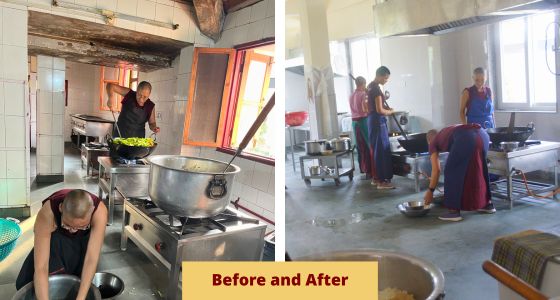
With about 300 people to feed every day, the nuns do most of their cooking in big pots and the heat is intense. The new extractor fan, ceiling fans, larger windows, and raised ceiling make the kitchen cooler and brighter.
This area of northern India experiences heavy monsoon rains and summer heat. During the monsoon, heavy rains overflowed the gutters between the original roof and the roof extension and water would pour into the kitchen, distressing the nuns and making the floor slippery.
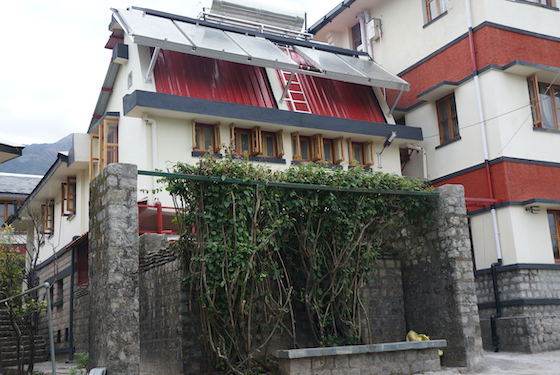
Here is a photo of the old kitchen roof with solar panels. The existing sloping roof was dismantled, the kitchen walls raised, and a flat roof created. Now there is extra work and seating space and the solar panels can be easily accessed for maintenance and cleaning.
The existing sloping slate roof was dismantled and the kitchen walls were raised. This change also provides an easily accessed rooftop that can be used for many things such as food preparation, additional outdoor seating, for drying cleaning cloths, and to set bowls of the nuns’ homemade yogurt in the sun to set during the colder months.
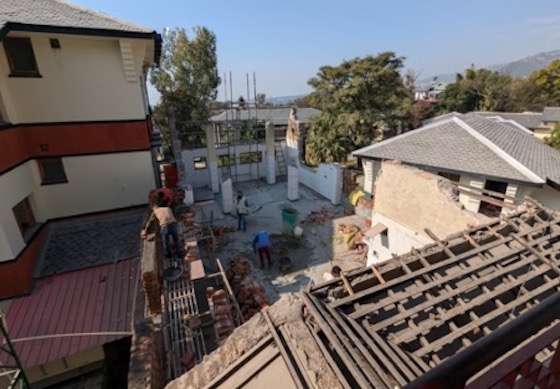
Dolma Ling Kitchen repairs in Decemeber 2024. Part of the renovations involved changing the roof to prevent leaks and create a better space inside and outside the kitchen.
The new flat roof has been designed to incorporate the bank of solar panels which used to be fixed on the slate roof. The solar panels are now re-established on the open section of the flat roof and are producing lots of hot water for washing up. It is much easier to access them for cleaning and maintenance.
Changing the roofline brings other advantages. The resulting large covered floor open at the sides will be used as an overflow from the now quite congested dining hall. This will be especially useful during the monsoon when the nuns cannot spill out onto the courtyard to sit and eat outside. The top floor space is wonderful and will be much appreciated by the nuns during the hot season and the coming monsoon.
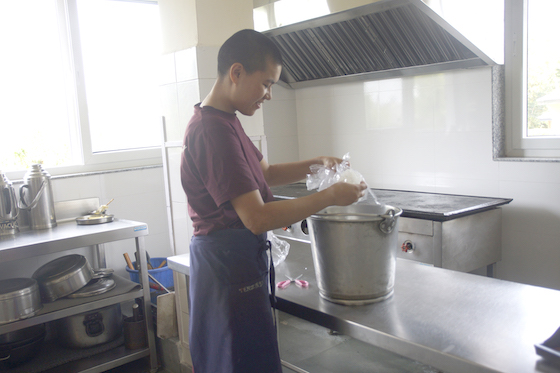
It’s now so bright and airy inside the kitchen that we had to adjust the photos so that they wouldn’t be overexposed. The new, larger windows will also require less maintenance than the old wooden-framed ones. Notice the big extractor fan about the grill stove.
The old kitchen windows with their wooden shutters provided insufficient ventilation and were very difficult to maintain. The renovation involved replacing the windows with larger UPVC windows with sliding glass and mesh shutters. “UPVC” stands for “unplasticized polyvinyl chloride” and the new windows are lightweight, strong, and low maintenance.

The nuns are extremely grateful for the newly renovated kitchen. For many months they have been working from a temporary kitchen set up in the dining hall and they moved into the renovated kitchen on April 7, 2025.
In 2024, the Tibetan Nuns Project put out a call for help to renovate the kitchen ideally before the onset of the intense monsoon rains that year. However, both the funding and the work took longer than expected, but we’re thrilled to let you know that all the renovations are completed and the nuns will be able to work more comfortably this spring and summer and in the years to come. April 8th was the first full day of cooking in the renovated space. Thank you!
See our Current Needs section for projects we are working on now.

